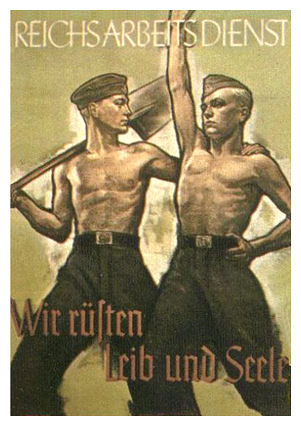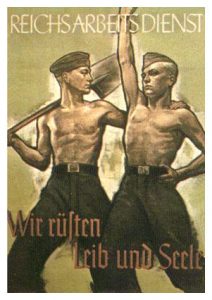
Economic Policy
Nazi Economic Policy
Please note: this is very a basic overview.
Aims of Nazi economic policy:
There were several overriding aims of economic policy. These were: to reduce unemployment, increase productivity and to ensure that the currency was safe. More specific Nazi aims include, but are not restricted to:
• To enable Germany to be ready to go to war
• Reduce to a minimum the amount of goods needing to be imported.
• Maintain a reasonable standard of living and rate of pay for Germans.

Policy in practice:
• Increased the size of the armed forces.
• Began rearmament programme (air force, naval constructions and investment in weapons such as Panzer tanks).
• Continuation and expansion of the autobahn (motorway) building programme.
• Forced focus on manufactured goods.
• Selective importation policy. Buy from cheap, third world countries and pay ‘in kind’.
The economy was initially placed under the control of Hjalmar Schacht. He was replaced by Herman Goering who introduced the 4 year plans. The German Labour Front which oversaw many of the projects was led by Robert Ley. During the Second World War the economy was put on a war footing. Albert Speer was responsible for war production which included much control over Germany’s war economy.
Other policies that have economic implications:
• Lebensraum (living space) and the (re)-creation of a greater Germany.
The Ruhr valley and the Rhineland were reoccupied by German troops. This meant that industry was once more under German (Nazi) control. Anschluss (merger with Austria) leads to greater availability of raw materials. Cessation (taking) of parts of Czechoslovakia provides further raw materials. Later the invasion of Poland would provide cheap labour, raw materials and space in which to expand the economic markets.
• Anti-Semitism (anti-jewish policies). Resulted in large amounts of revenue and resources being reassigned to the state. Also unemployed Jews would no longer be classed as being ‘unemployed’.
Tackling unemployment: some methods
• Armed forces expanded.
• Militarisation programme leads to jobs in manufacturing.
• Public works such as the Autobahns required lots of workers.
Was Hitler successful?
• Unemployment fell to approximately half a million by the outbreak of war.
• Currency was stable and investment rose.
• Infra structure was in place to enable economic expansion.
• Manufacturing base was established and functioning relatively effectively.
BUT
• Rates of pay were no higher in 1939 than they had been in 1928. (Remember that they had slumped though)
• Hours worked rose and workers rights were diminished.
• Few luxury items available, consumer goods also a rarity.
Other factors
• Payment of reparations ended, this enabled investment in Germany.
• German recovery from the wall street crash is comparable to that of other countries, the world wide economy improved at a similar rate to that of Germany: so outside factors may have influenced growth.
Things to revise and remember:
1933. Initial policy. Cautious moves towards rearmament
1934. Four Year Plan
Investment in military increases 1936-1939. See this page for more depth on the German economy in the period 1936-39.
Anti-Semitism, Jewish property confiscated and redistributed following Kristallnacht.
[products limit=”8″ columns=”4″ category=”hitlers-germany” cat_operator=”AND”]
